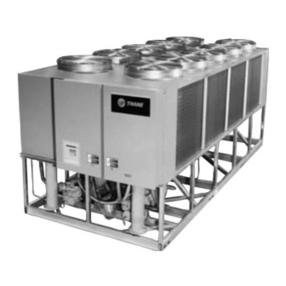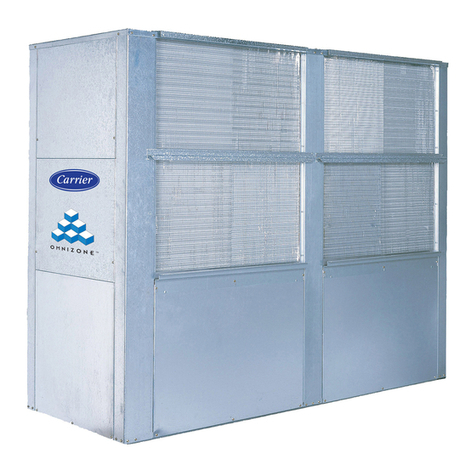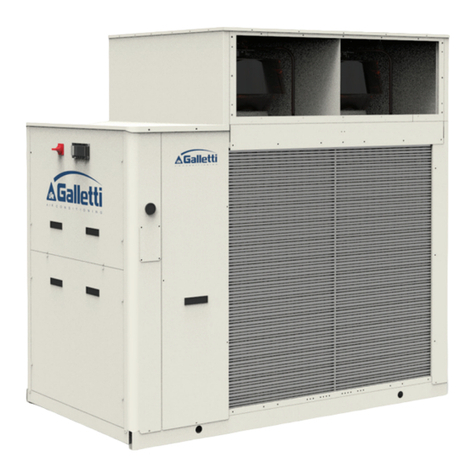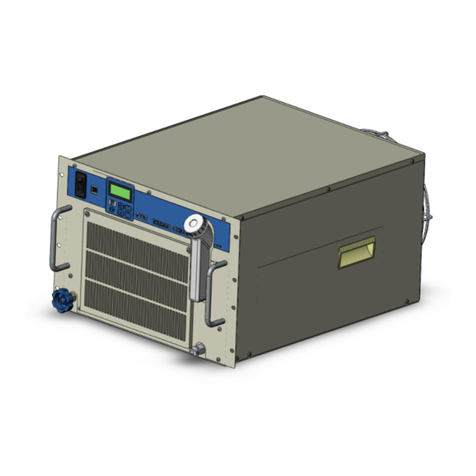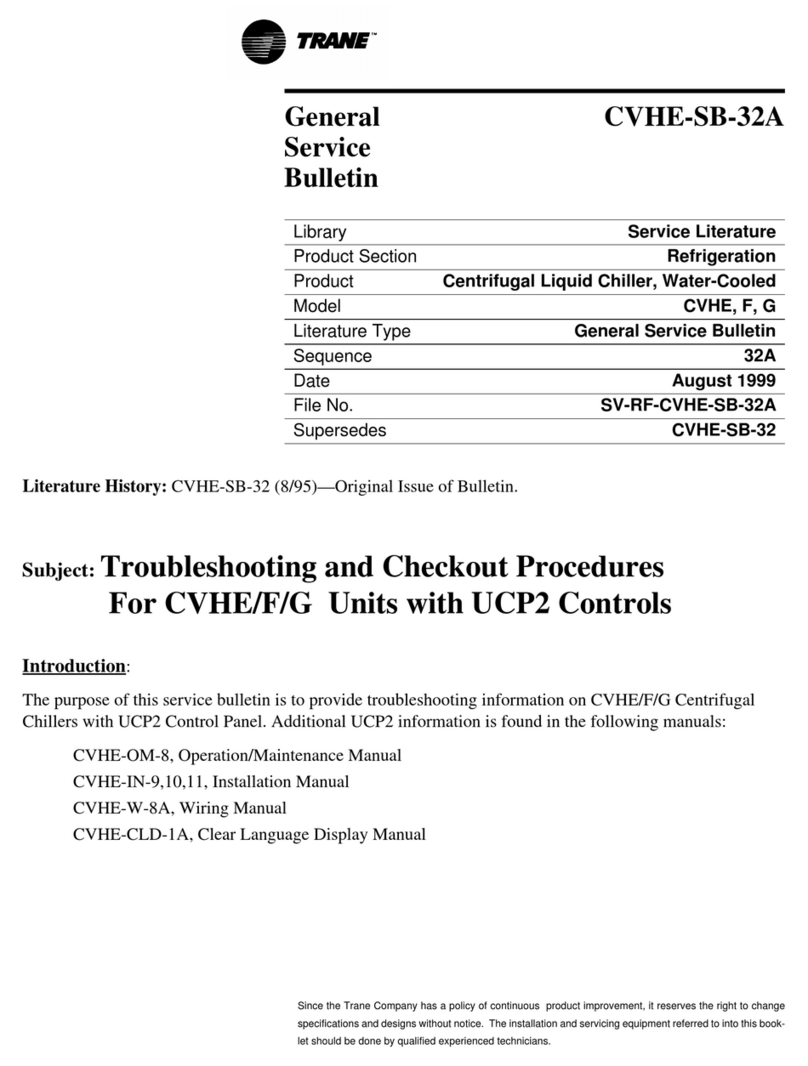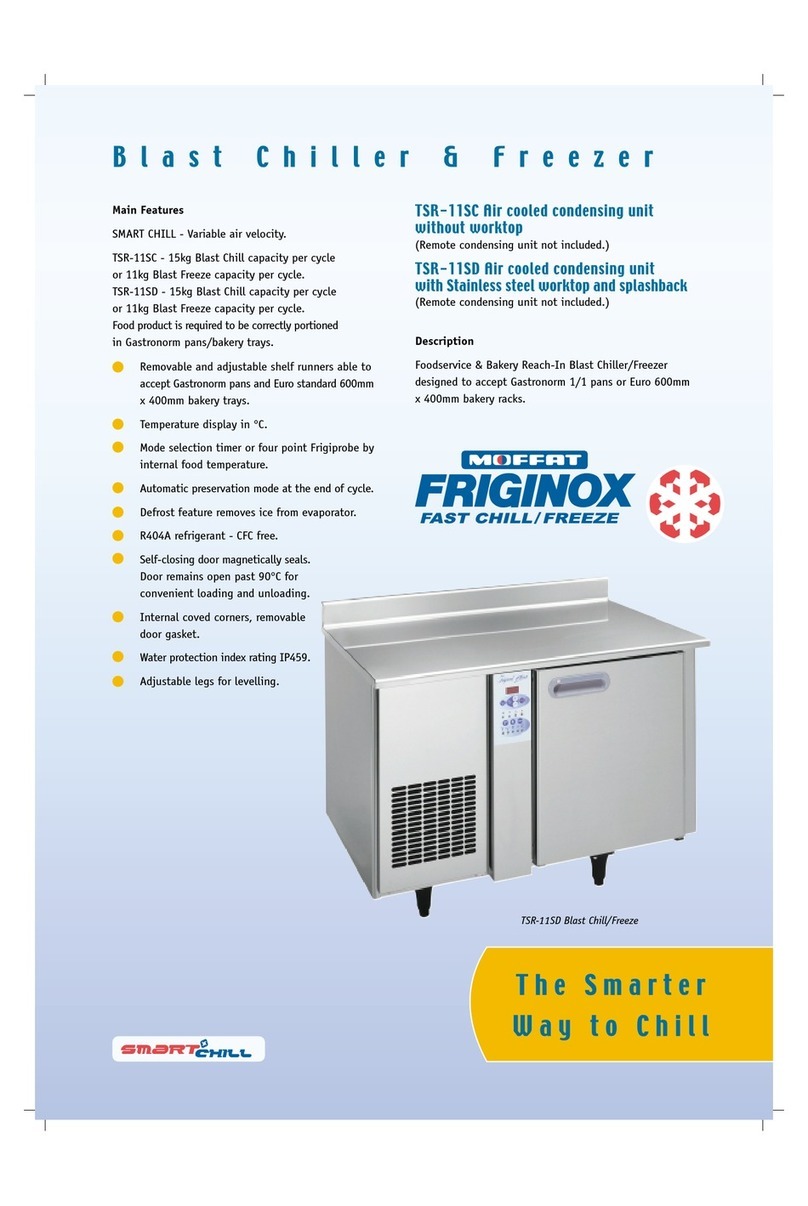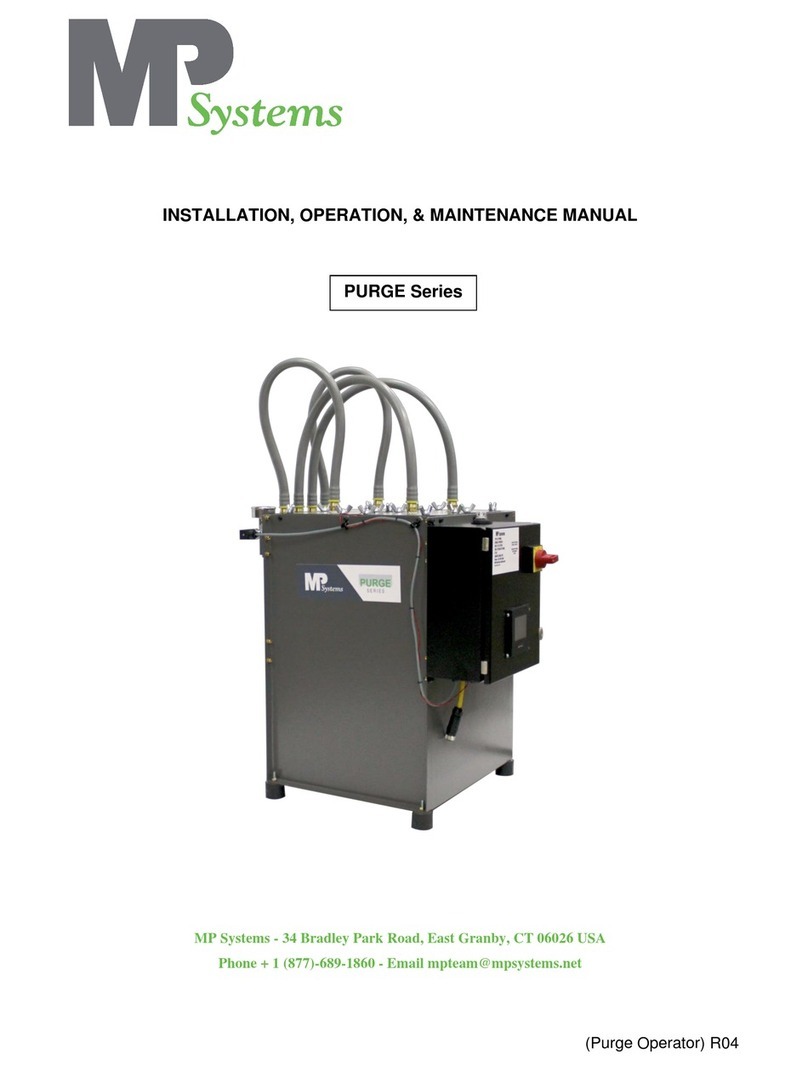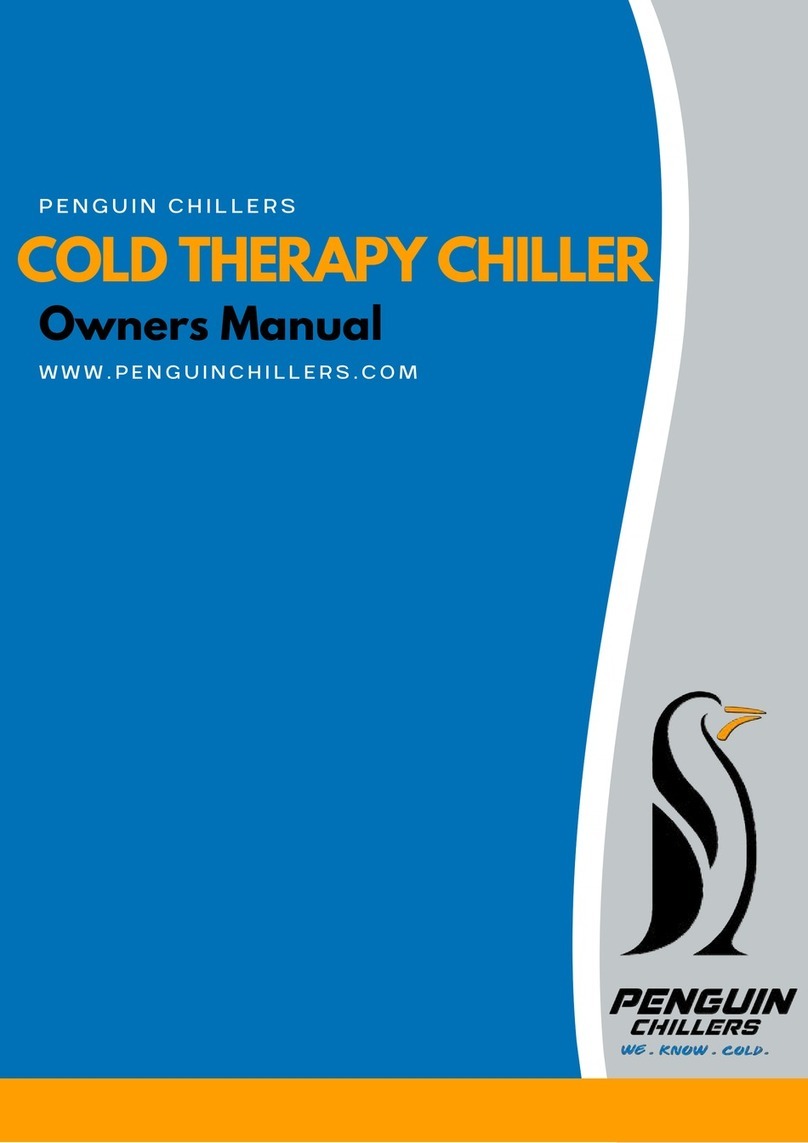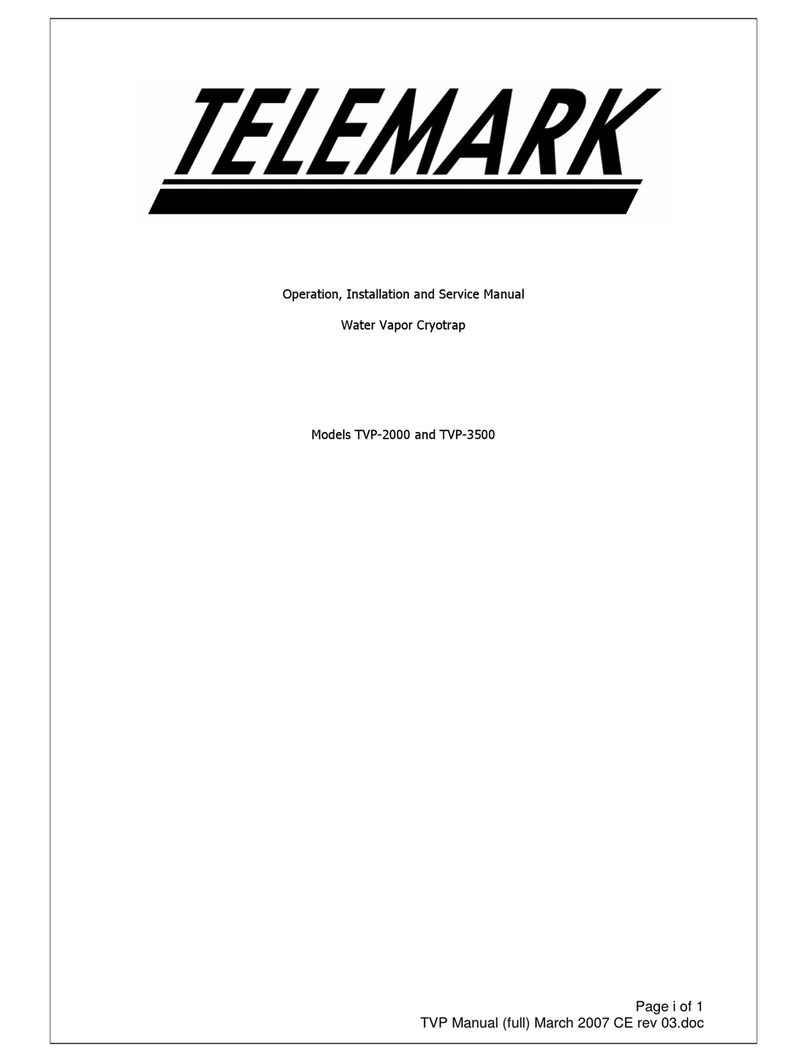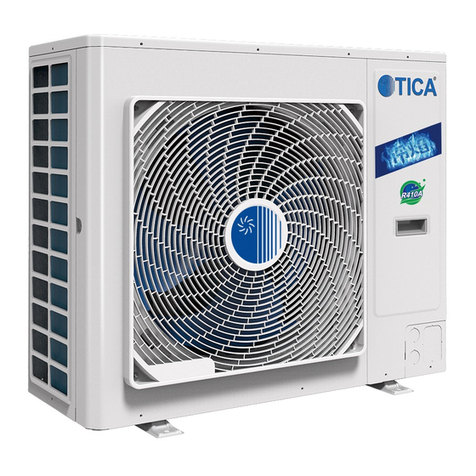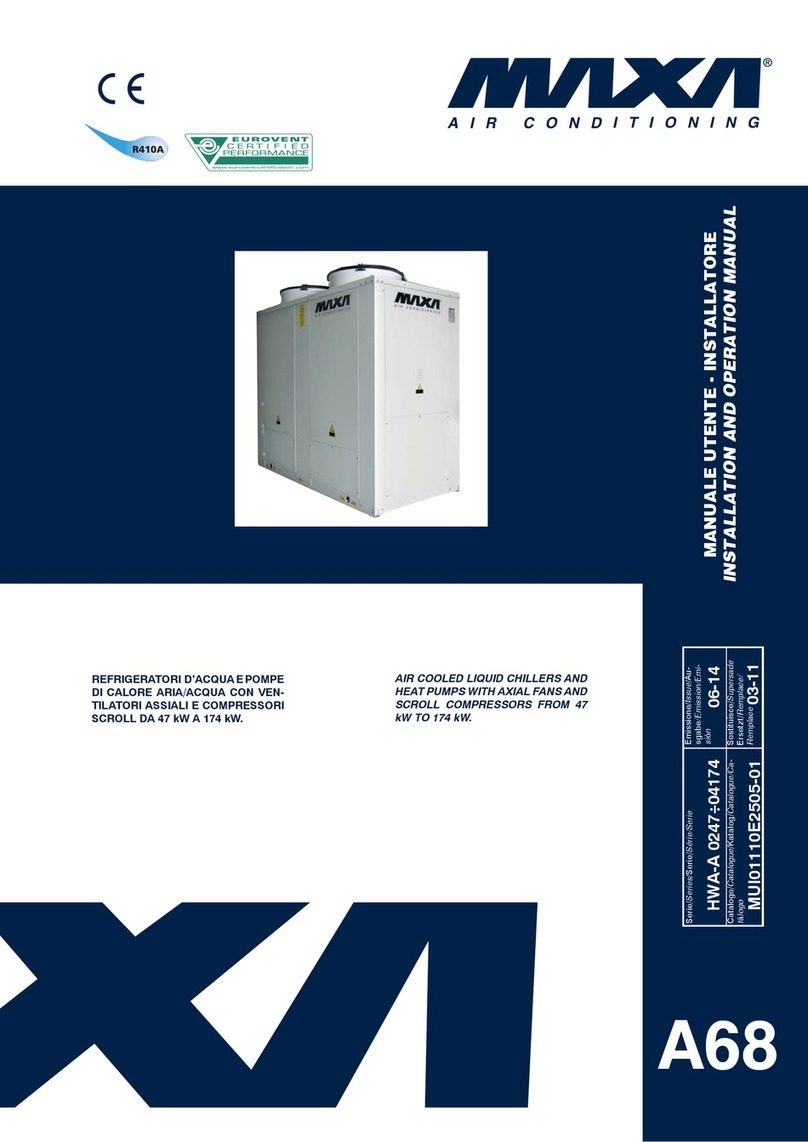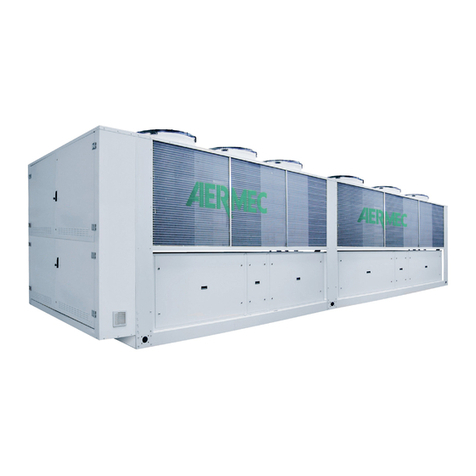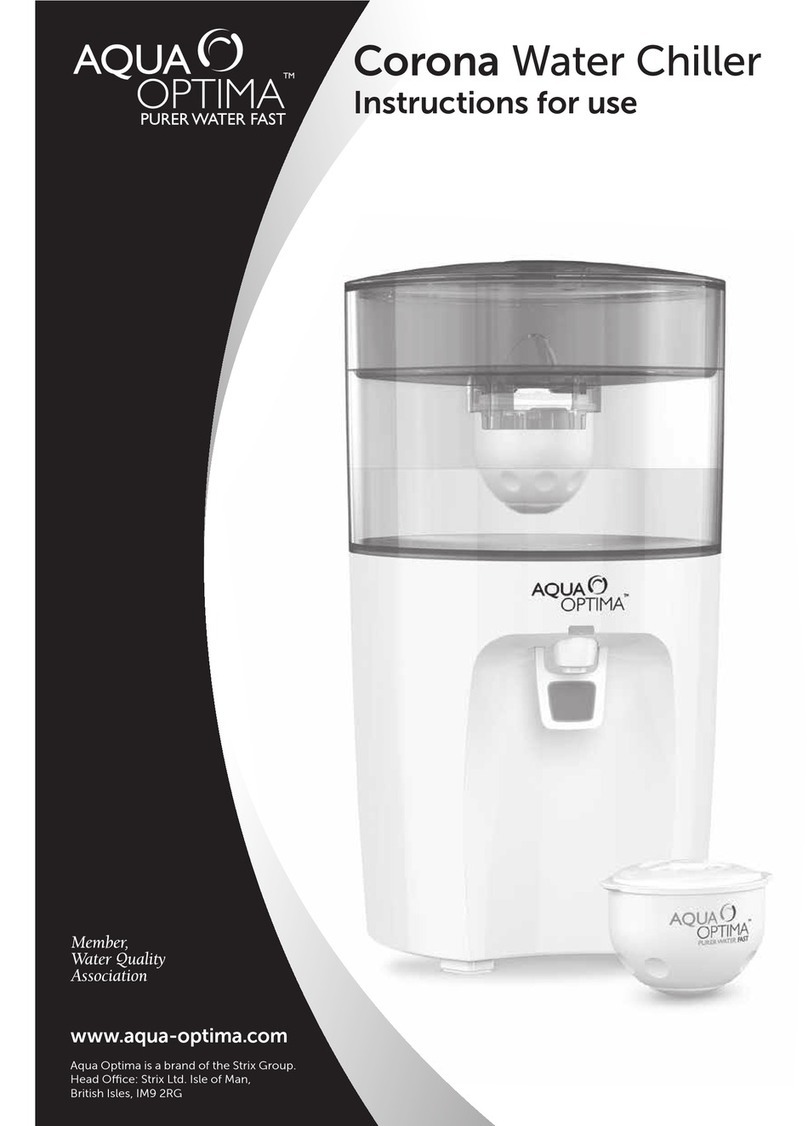
G. CHILLED WATER CIRCUIT
1. Chilled Water-to-Refrigerant Heat Exchanger (Evaporator):
This exchanger is of the brazed plate stainless steel design. The evaporator is engineered with
maximum efficiency in mind.
2. Water pump: The water pump must be checked for proper direction of operation. Set GPM by amps
compared to pump curve. The discharge ball valve must also be adjusted to regulate the proper
gallon per minute flow to the evaporator as stated on the data label found on the back panel of the
chiller. Failure to do so may result in a lack of water pressure to the equipment being cooled or a
lack of water temperature drop through the evaporator. THE PUMP SHOULD NEVER BE RUN
WITHOUT FLUID TO IT.
3. Air vents: Air vents are required at high points in the system to allow the bleeding of air while filling
the system. These vents are to be supplied and installed by the contractor. A water fill port must be
added to the suction line by the contractor. To fill the system, open all air vents and begin filling with
fluid. When a steady stream of fluid comes from the vents with no air, close the vents. To fill the
expansion tank to the proper level, loosen the small nut at the bottom of the airtrol and allow air to
escape until fluid comes out. Tighten the nut. Circulate the fluid by turning on the pump. Repeat
bleeding of air vents until all air has been removed.
4. Water Tank: On an open system the plastic water tank provided allows for easy filling of the chilled
water circuit. Fill the tank by removing the cap at the top of the chiller. Turn the chiller on activating
the pump to fill piping. Being aware of the water level in the tank, add if it should run low. You
should maintain half capacity in the tank to guarantee a full column of liquid to the pump suction.
H. REFRIGERANT CIRCUIT
1. Refrigerant Compressor:
The refrigerant compressor used is an industrial type, full hermetic or semi-hermetic. These
Compressors can be either single phase or three phase, depending on the application. The
compressors used are designed for high temperature applications which allows an evaporation
temperature range of 20°F (-7°C) to 50°F(10°C.).
Each compressor motor is fully protected by either an internal or external overload which are of the
automatic reset type. All compressors used are suction gas-cooled and have a wide working range.
The connected electrical load can vary with the compressor load, ambient temperature or cooling water
temperature.
2. Air Cooled Condenser and Condenser Fan Cycling Control (Low Ambient):
All air cooled condensers used in the AIR/TAK chillers are industrial plate fin type coils, designed for
maximum ambient conditions. Each condenser has a sub-cooling system which permits the condensed
refrigerant to be sub-cooled below the normal condensing temperature to within 10°F of the ambient
temperature. The condensers are forced convection types and fan motor(s) are controlled by pressure
switch(s) (low ambient control). This pressure switch is activated by the condenser head pressure. This
pressure will vary with the ambient temperature and evaporator load. As the pressure increases to a
factory set cut-in pressure, the fan switch is activated and the fan motor starts. The fan removes the
heat within the condenser and lowers head pressure to the factory set cut-out point. With the fan switch
controlling the upper and lower pressure limits, the chiller can operate through a wide range of ambient
and load conditions. When the ambient is high and the chiller is operating at full load, the condenser
pressure and temperature will stabilize and the fan(s) will run continuously.
